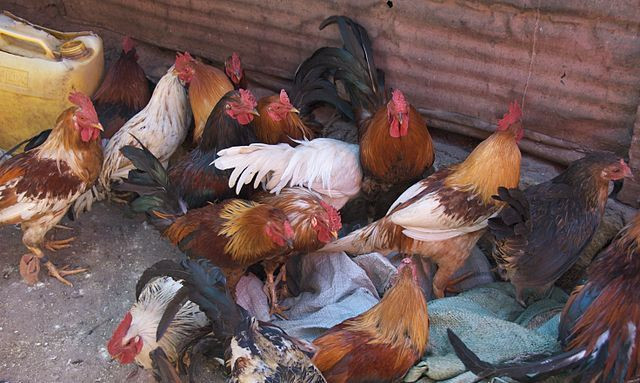Poultry Market Closures Could Reduce Human Risk Of Bird Flu By 97%

If the bird flu (H7N9) breaks out in China this winter, a new study from Hong Kong University estimates that the closure of live poultry markets would reduce the risk of human infection by 97 percent — or more. Because two new cases of human infection were found in October, scientists have been searching for an effective control measure as transmission of the virus seems to occur between poultry and people and not person-to-person.
“We cannot rule out that H7N9 virus might have incubated in the community during the last summer,” Dr. Benjamin J. Cowling, associate professor at the School of Public Health at the University of Hong Kong, stated in a press release.
Of the 135 total cases most recently reported by the World Health Organization (WHO), 45 people have died.
Retrospective Analysis
Soon after the initial outbreak, Shanghai, Hangzhou, Huzhou, and Nanjing closed their live poultry markets (LPMs) as a precautionary public health measure in April 2013. In the new study, the researchers quantified the effect of the closures in these cities. They analyzed the data on 85 human cases of avian influenza — a H7N9 virus infection reported in Shanghai, Hangzhou, Huzhou, and Nanjing by June 7, 2013.
“We constructed a statistical model to explain the patterns in incidence of cases reported in each city on the basis of the assumption of a constant force of infection before LPM closure, and a different constant force of infection after closure,” wrote the authors in their study.
Based on the fact that LPMs had been the predominant source of exposure for confirmed cases in these cities, the researchers estimated the mean incubation period to be 3.3 days (incubation times ranged between 1.4 and 5.7 days). Then, using that calculation as well as their statistical model, they determined closing the poultry markets reduced the daily number of infections by 99 percent in Shanghai, by 99 percent in Hangzhou, by 97 percent in Huzhou, and by 97 percent in Nanjing.
“This finding gives a booster to the frontline infection control officers," Professor Gabriel M. Leung, of the University of Hong Kong, stated in a press release.
WHO reports that most human cases reported contact with poultry or live animal markets and most presented with pneumonia. Knowledge about the virus is still scant, though evidence does not support sustained human-to-human transmission. That said, four small family clusters were reported among the total cases.
“In the short term, LPM closure should be rapidly implemented in areas where the virus is identified in live poultry or people,” wrote the authors in their study. “In the long term, evidence-based discussions and deliberations about the role of market rest days and central slaughtering of all live poultry should be renewed.”
Source: Yu H, Wu JT, Cowling BJ, et al. Effect of closure of live poultry markets on poultry-to-person transmission of avian influenza A H7N9 virus: an ecological study. The Lancet. 2013.



























